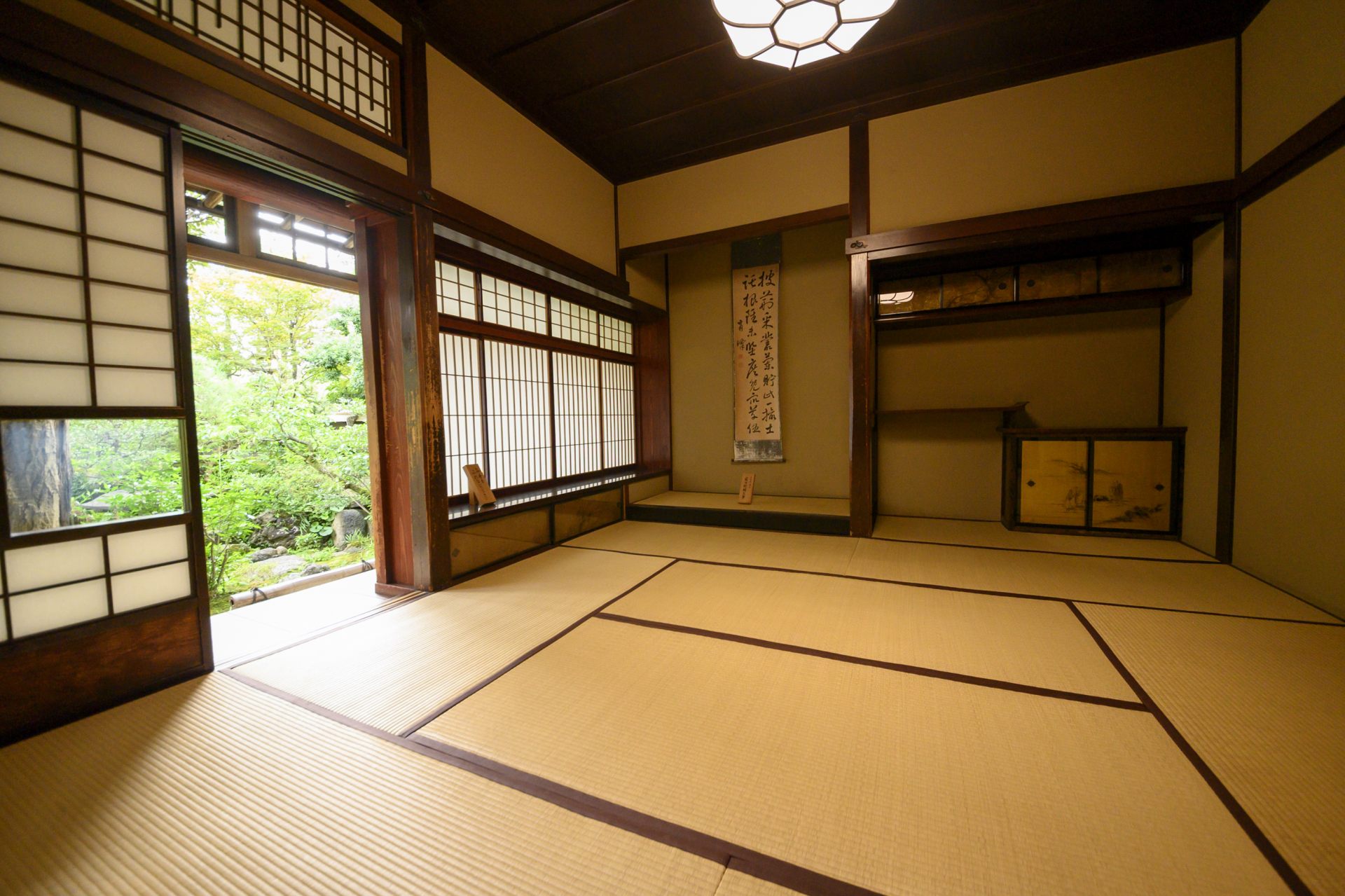In the "Nagamachi Bukeyashiki Ato," where stone pavements and earthen walls are still visible, the remains of residences where the samurai of the Kaga domain lived still remain. The Nomura family, located in the corner of the samurai residences, is the former samurai residence of Nomura Denbei Nobusada, a vassal of the Kaga domain lord Maeda Toshiie. The Nomura family, who were 1200 koku in rank, were classified as middle-ranking warriors in the Kaga domain. They held such positions as head of the Umamawarishu (mounted warriors), who guarded the horses mounted by the lord, and magistrate, the administrative position in the domain.
In the garden, variously shaped Toro(lanterns) and Ishibashi(stone bridges) are skillfully placed to give the garden the appearance of a samurai's garden. The living space features the "shoin-zukuri" style, typical of samurai residences. The rooms were arranged on different levels, with the higher level rooms being called "Jodan-no-ma" or "Ekken-no-ma" The differentiation of ranks according to the seating is another characteristic of samurai residences. The residence remains tranquil, making it hard to believe that it is located near a downtown area, as if one is in the mountains, and one feels as if one had slipped back in time to the days when samurai warriors lived in the house.
You can enjoy matcha green tea and dried sweets in the tea room on the second floor. The Nomura-ke residence was awarded two stars in the 2009 "Michelin Green Guide Japan”, which rates tourist attractions in Japan. Its garden was ranked third in the rankings of Japanese gardens by "The Journal of Japanese Gardening”, an American garden magazine. The garden continues to receive high acclaim.
Highlights
-
The living space features the "Shoin-zukuri" style, typical of samurai residences.
-
You can enjoy matcha green tea and dried sweets in the tea room on the second floor.
-
The Nomura-ke residence was ranked third in the rankings of Japanese gardens by "The Journal of Japanese Gardening”, a highly acclaimed American gardening magazine.























